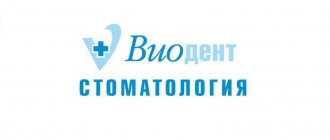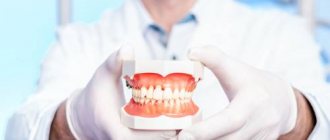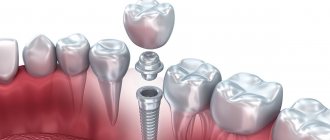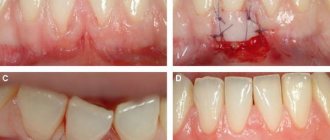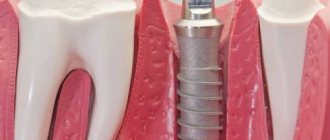Conditions for expensive treatment For whom you can get a deduction Amount of deduction and deadlines for submitting documents Expensive dentistry How to get a deduction for treatment Documents for deduction
To understand in detail what a tax deduction for treatment is, we suggest watching our video.
Using illustrative examples, we tell you who has the right to a deduction, what documents need to be collected for the tax office, for whom you can get a deduction, and how much money you can ultimately return to your account.
The fundamental difference between simple and expensive treatment is the size of the tax deduction. The article “Medical services, medications and expensive types of treatment for tax deduction” lists the types of treatment approved by Decree of the Government of the Russian Federation of April 8, 2020 No. 458.
In order to find out the type of treatment you need, it is not necessary to look for the disease in the long list of the Regulations. Ask the clinic where you were treated for a “Certificate of payment for medical services to be submitted to the tax authorities” and look at the line “service code”.
If the code is No. 1 , it means the treatment was simple. If code No. 2 - expensive.
In a separate article, we described in detail what the “Tax Deduction for Treatment” is. Below we will tell you how to determine whether the treatment was expensive, what this means, what benefits it brings and how to get part of the costs back.
Is dental implantation an expensive treatment?
The cost of installing implants is affected by:
- Clinic category . In large dentistry with a large flow of patients, there is competition, so the cost of services may be lower than in small institutions. In Moscow and St. Petersburg, taxes and the cost of renting premises are higher, so prices for services are several times higher than in the provinces.
- Doctor's qualifications . Attending seminars and advanced training courses is expensive, so treatment from an experienced doctor will be more expensive. The availability of permits will also affect the cost. Registration and updating of documentation requires financial investments.
- Applied technology of implantation:
- classic in 2 stages;
- basal;
- express method;
- laser;
- mini-implantation.
In addition to the dental implant and superstructures, diagnostic procedures, consumables and repeated surgical interventions are paid for.
Insurance policy
A deduction can also be obtained in cases where no medical procedures were performed, no medications were purchased, and the money was spent on paying for a voluntary health insurance policy. In this case, the deductible applicant will need a certified copy of the insurance policy or agreement with the insurance company.
A deduction will be possible only if the insurance contract provides for payment for treatment services, and the insurance organization has a license to carry out this type of activity.
A certified copy of the license is submitted to the inspection. Or a link to its details should be given in the contract.
The above documents must be accompanied by certified copies of payment documents indicating that the funds were spent on paying insurance premiums.
Why are dental implants so expensive?
There are now more than 300 brands of dental implants. Production, research and development and materials require high costs, so products cannot be cheap. Important indicators in the manufacture of implantation systems:
- Material . Typically, artificial roots are made from titanium alloy Ti-6Al-4V, which contains a small amount of aluminum and vanadium. Impurities give titanium strength, but slow down osseointegration (the process of fusion of the implant with the jaw bone). Manufacturers of premium structures use pure titanium 4 (G4Ti), which does not contain impurities. Metal-free ceramics and an alloy of zirconium dioxide with titanium are also used as materials. Ceramic rods are suitable for people with diseases of the mucous membrane and allergic reactions to metal.
- Surface type . The implant surface is an important factor responsible for the rate of osseointegration. Basic surface treatment consists of sandblasting with titanium oxide or alumina and acid etching. This technology has the international name SLA and provides a rough, porous surface. After treatment, the surface can be coated with various chemical compounds that accelerate the synthesis of bone tissue. These compounds include calcium phosphate, fluoride ions and phosphorus.
- Implant shape and thread types . When choosing an implant, the shape and type of thread are essential. Each model interacts with the jawbone differently. There are 4 types of bone: D1, D2, D3 and D4. D1 is the densest type, D4 is the softest. High-density bone provides good primary stability but has fewer blood vessels, so osseointegration will occur more slowly. The softest type D4 is a poor option for implantation. The most favorable bone types are D2, D3.
For dense bone, cylindrical and conical implants are suitable. Too coarse carving is contraindicated in this case, since high tension in the bone will promote atrophy. It is good when the microthread is cut in the neck of the rod, and in its lower part the thread is moderately pronounced. For soft types of bone, conical-shaped structures with self-tapping threads are suitable.
The dental system is selected depending on the density and volume of the alveolar process of the jaw, the place of implantation (aesthetic or chewing zone), and the method of prosthetics.
How do cheap ones differ from expensive ones?
Conventionally, dental implants can be divided into three large groups:
- Premium systems from leading companies. In addition to the production of rods and suprastructures, such companies invest a lot of money in development, histological research, and testing. They create training programs for dentists and continuously improve production technology. Ultimately, this is reflected in the cost, which is quite justified. Such designs include Swedish Astra Tech, German XiVe Friadent, Swiss brands Straumann and Nobel Biocare.
- Mid-segment designs . The second group includes companies that do not make a significant contribution to the development of implantology, but simply repeat the developments of manufacturers of the first group. It is not always possible to recreate an exact copy, so some samples are not entirely successful. However, there are models that, in the capable hands of a surgeon, can last a long period. These brands include the Israeli Alpha Bio and MIS, the American Bicon and the German Ankylos.
- Designs with low functional capabilities . Models in this category are manufactured at small budget enterprises. Such dental systems include Belarusian, Russian and Ukrainian.
- Complete restoration of the dentition in just 4 days!
more detailsRoott Pterygoid Implants Sinus lift is no longer needed!
more details
Once and for life! Express implantation in 4 days with a permanent ReSmile prosthesis
more details
All-on-4, All-on-6, ReSmile, Zygomatic implantation We use all modern methods of dentition restoration
more details
What does the final price consist of?
The final cost of implantation depends on the costs at each stage:
- The preparatory stage includes sanitation of the oral cavity, consultations with specialists, and collection of samples.
- The diagnostic stage involves an orthopantomogram and computed tomography.
- If there is insufficient bone tissue, directed regeneration, sinus lifting or bone block grafting is performed.
- Surgical stage. The doctor forms a bone bed, screws in the implant and sutures the mucous membrane.
- After 3-5 months, the gum former is installed. To do this, the doctor dissects the mucosa, removes the temporary plug, and installs the former.
- After 2-3 weeks, when a cushion of gum tissue forms, the former is removed and an abutment is installed in its place.
- Prosthetics. Impressions are taken from the jaws, from which artificial crowns will be created in a dental laboratory.
- Fitting, correction, fixation of the structure in the oral cavity.
- Rehabilitation. The patient regularly visits the dentist to monitor the functionality of the prosthesis and the condition of the tissues.
Possible savings during treatment
The experience of the dentist and the quality of the materials used are directly related to prices at the chosen medical institution. You can save money in the following ways:
- Registration of an insurance policy. Some clinics offer special discounts to people whose treatment is covered by health insurance programs.
- Simultaneous installation of dentures on several teeth. Thanks to this, you will not have to spend extra money on painkillers, impressions and x-rays.
- Refusal to install a temporary crown when installing an implant in the chewing area.
What you can and cannot save on during treatment
The professionalism of the doctor and the quality of the materials used are directly dependent on the pricing features of the clinic. List of acceptable ways to save:
- Buy health insurance. Sometimes clinics provide discounts to patients who are treated under insurance programs.
- You can refuse a temporary artificial crown if the chewing area is being prosthetized.
- Perform implantation on several teeth at the same time. This will help save on making impressions, anesthesia and x-rays.
Changes for existing dental clinics registered as LLCs.
If a dental clinic already uses the legal form of a Limited Liability Company in its work and has a functioning X-ray room, according to the updated requirements of the X-ray room equipment standard, it must contain not only a radiovisiograph, but also a panoramic X-ray machine. Previously, the office could only be equipped with a radiovisiograph.
At the same time, it is not enough to simply purchase the necessary equipment; you will need to comply with safety standards for the installation and operation of X-ray equipment. To do this, redevelopment and installation of additional x-ray protection may be necessary, after which it is necessary to re-issue a technical passport for x-rays. Failure to comply may result in license revocation.
At the same time, it is not enough to simply purchase the necessary equipment; you will need to comply with safety standards for the installation and operation of X-ray equipment. To do this, redevelopment and installation of additional x-ray protection may be necessary, after which it is necessary to re-issue a technical passport for x-rays. Failure to comply may result in license revocation.
From January 1, it will become mandatory to have a pharmaceutical refrigerator in a dental surgeon’s office. They also added a requirement to have one defibrillator per department/office. Instruments, etc. were practically eliminated.
Order of the Russian Ministry of Health dated July 31, 2020 N 786n was registered on October 2, 2020 with the Russian Ministry of Justice. Full version of Order N 786n dated July 31, 2020.
How to get back part of the money spent on implantation
The list of costly types of treatment was approved by Decree of the Government of the Russian Federation No. 201 of March 19, 2001 . According to point No. 9, dental implantation is defined by the Ministry of Health as an expensive type of treatment. When drawing up a certificate of payment for medical services for the tax authorities, the attending physician enters a code that means that the treatment is included in the category of cheap, and “2” - in the category of expensive. For implantation, coding “2” is used. Prosthetics with implants is not included in the list.
What is a tax deduction - when and how much you can save
A tax deduction is an opportunity for a taxpayer to return 13% of the amount spent on treatment. The right and procedure for payments is regulated by the following regulations:
- Article No. 219, clause 1, clause 3 of the Tax Code of the Russian Federation provides that every taxpayer has the right to receive an annual monetary compensation in the amount of 13% of the amount spent on treatment in any medical institution in the country.
- Decree of the Government of the Russian Federation dated March 19, 2001 No. 201 regulates the procedure for obtaining tax deductions and provides a list of medical services that are subject to compensation.
A percentage of the amount spent is accrued for the following services:
- medical procedures provided to the taxpayer or his immediate relatives (children under 18 years of age, spouse, parents);
- medications prescribed by a doctor;
- paid premiums to the insurance company based on the personal health insurance agreement.
The tax deduction is calculated on the total amount of expenses and cannot exceed 120,000 rubles during the year. If the taxpayer intends to compensate for expenses spent on treating relatives, the maximum payment amount will be 50,000 rubles.
What documents need to be collected and where to submit them?
List of required documents:
- an application for the provision of a tax return addressed to the head of the tax authority;
- application for transfer of funds to the taxpayer’s personal bank account;
- a certificate of the established form with the coding of the medical service from the clinic where the treatment was actually carried out;
- a copy of the patient’s agreement with the clinic (with a list of services provided and their cost);
- a copy of the clinic’s license to provide these services;
- document confirming payment for the service (cash receipt);
- a copy of the tax registration certificate (TIN);
- copy of the passport;
- certificate 2 personal income tax from the place of work;
- declaration in form Z-NDFL;
- if the service is provided to a family member of the taxpayer, then additionally provide a document confirming the relationship (birth or marriage certificate).
These documents must be submitted to the tax authority at your registration address.
How to get a deduction for treatment
The process of applying for a tax deduction for expensive treatment is no different from the general rules. The main thing is attentiveness, scrupulous collection of documents and correct filling out of the 3-NDFL declaration.
On the one hand, nothing complicated. On the other hand, even a minor mistake can lead to you having to start all over again. Considering that tax authorities take three months for a desk audit, incorrectly completed documents will stop the process and you will waste time.
What will you get if you register in the online service NDFLka.ru:
- We will compile for you a list of documents you need;
- We will check the correctness of the design;
- We will fill out the 3-NDFL declaration for you or help you do it yourself;
- We will send you two electronic formats of 3-NDFL: XML and PDF, so that it is convenient for you to submit the declaration to the Federal Tax Service;
- or we will send 3-NDFL to the tax office ourselves using your electronic signature;
- We will be in touch until you receive the money in your bank account.
Average cost in Moscow
| Name | Cost, rub. |
| Turnkey implantation | |
| Classic with installation of a metal-ceramic crown | 40000 |
| Classic with installation of a zirconium crown | 55000 |
| Implant supported dentures | |
| Removable for one jaw | 100900 |
| Clasp 2-sided | 180000 |
| Other operations | |
| Implantation of osteoconductive material in the area of 1 tooth | 9600 |
| Protective membrane 1 tooth | 12700 |
